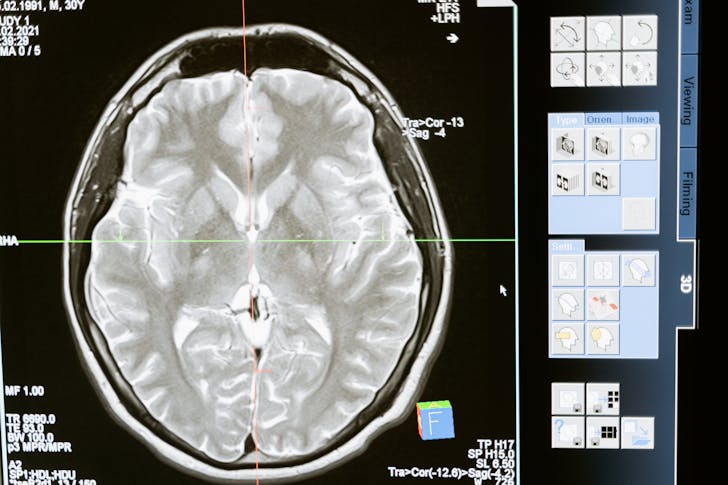In the vast expanse of technological advancements and scientific discoveries, Voice to Skull technology, often abbreviated as V2K, emerges as a subject wrapped in layers of mystery and controversy. While the concept might sound like something straight out of a science fiction novel, it has garnered attention and concern from various corners of society. Here's a closer examination of what you really need to know about V2K technology, diving into the facts, debunking myths, and understanding its implications.
1. Origins and Background of Voice to Skull Technology
Voice to Skull technology finds its roots deeply embedded in the soil of conspiracy theories, particularly those surrounding themes of mind control and covert government operations. These theories suggest the existence of technology capable of transmitting voices directly into a person’s skull, bypassing traditional auditory pathways. While such narratives may seem intriguing, they are, in essence, a blend of speculation and imagination, lacking solid footing in the realm of scientific evidence.
2. Lack of Scientific Basis
The fundamental principle to understand about V2K technology is its need for a credible scientific foundation. The human auditory system is designed to receive sound through the ears, a process that involves the delicate conversion of sound waves into electrical signals that the brain can interpret. The idea of an alternative, direct-to-brain sound transmission technology not only challenges this natural process but also needs more empirical support within the scientific community.
3. Electromagnetic Radiation and Mind Control Claims
Among the most sensational claims tied to V2K technology are those involving electromagnetic radiation for the purpose of mind control. Such assertions often depict scenarios where individuals are targeted by government agencies or other entities capable of influencing thoughts or behaviors. Despite their dramatic flair, these claims stand on shaky ground, with no empirical evidence to support the feasibility of such technologies for mind control.
4. Psychiatric and Psychological Factors
A closer look at individuals reporting experiences with V2K technology often reveals underlying psychiatric or psychological conditions. Conditions such as schizophrenia, which can involve auditory hallucinations, may account for some of the experiences attributed to V2K. It's crucial to approach these reports with empathy and understanding, recognizing the complex interplay between mental health and perceived experiences of technology-induced voices.
5. Cognitive Dissonance and Confirmation Bias
Belief in V2K technology is often reinforced by cognitive dissonance and confirmation bias, where individuals may interpret unrelated events as validation of their beliefs. This psychological phenomenon highlights the human propensity to seek out information that aligns with existing beliefs, even in the absence of concrete evidence. Understanding this bias is key to comprehending why some individuals are convinced of their V2K experiences despite a lack of scientific validation.
6. Legal and Ethical Implications
The dissemination of V2K conspiracy theories carries significant legal and ethical implications. Spreading unfounded claims can have real-world consequences, especially for individuals predisposed to believe such narratives. The ethical dilemma lies in balancing freedom of expression with the responsibility to prevent harm caused by misinformation. Promoting critical thinking and responsible communication becomes essential in navigating these murky waters.
7. Government Denials and Skepticism
Responses from government and intelligence agencies regarding V2K technology have been uniformly skeptical. Official denials and the absence of credible evidence from reputable sources underscore the consensus view that V2K, as described in conspiracy theories, does not exist. This widespread skepticism among authorities further challenges the legitimacy of V2K claims.
8. Debunking and Scientific Scrutiny
Efforts to debunk V2K claims have emphasized the importance of scientific scrutiny and evidence-based analysis. By applying critical thinking and demanding empirical evidence, it's possible to dispel myths and clarify misconceptions surrounding this and similar technologies. Such an approach not only aids in debunking unfounded claims but also in fostering a more informed public discourse.
9. Mental Health Support
For those genuinely convinced they have experienced V2K phenomena, access to mental health support is crucial. Professional evaluation and mental health services can offer much-needed assistance, helping individuals to understand and cope with their experiences. Emphasizing the importance of mental health and offering support can make a significant difference in the lives of those affected.
10. Promoting Scientific Literacy
At the heart of addressing misconceptions about V2K technology lies the promotion of scientific literacy and critical thinking skills. Educating the public about the basics of sound transmission, auditory processes, and the importance of empirical evidence can empower individuals to make informed judgments about such claims. A society equipped with the tools of critical thinking and scientific understanding is better positioned to navigate the complex landscape of technological claims and conspiracy theories.
Conclusion
Voice to Skull technology, while a topic of fascination for some, remains firmly in the realm of fiction rather than scientific fact. By understanding the origins, debunking the myths, and recognizing the importance of scientific literacy, it becomes possible to approach the subject with both skepticism and empathy. In doing so, society can better support those affected by such claims while fostering an environment where truth and evidence prevail over speculation and misinformation.










